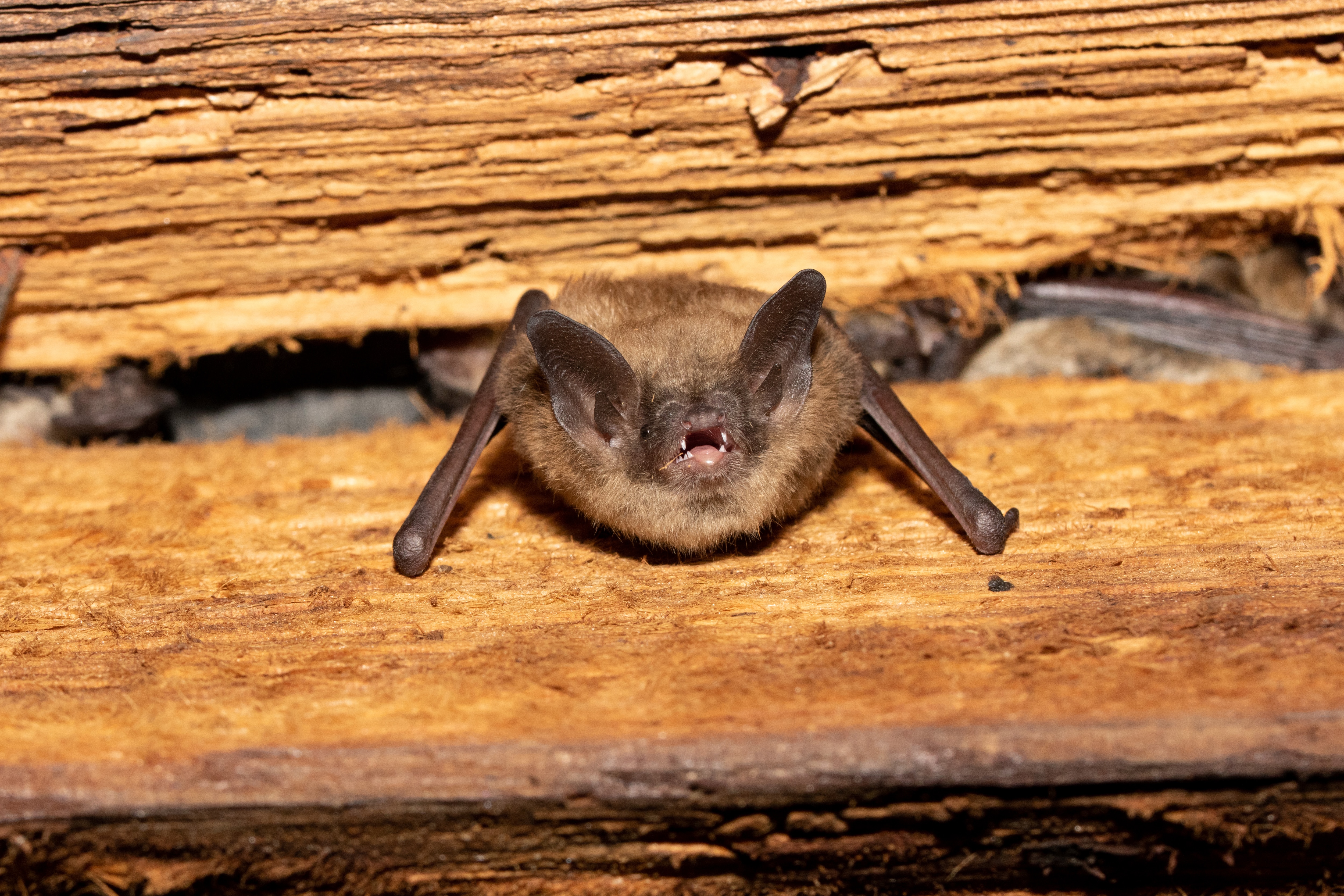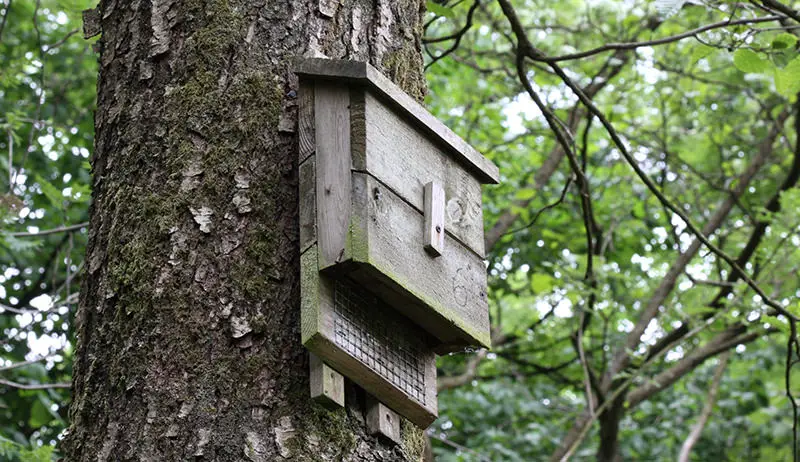A bat can live up to one week trapped in a house. However, it may accidentally injure itself or die due to dehydration or starvation during this time.
Bats are fascinating creatures that play significant roles in the ecosystems they inhabit. They are masters of flight and are known to consume a vast number of insects, helping to control insect populations. However, bats can sometimes find their way into homes, and once trapped, they can become a source of fear for some people.
It is understandable to wonder how long a bat can survive if trapped in a house. In this article, we will explore the different factors that can affect a bat’s ability to survive when trapped in a house. Understanding these factors can help you make an informed decision on how to handle a bat should it ever find its way into your home.

Credit: www.mass.gov
The Problem: Bats Trapped In Houses
Finding a bat in your house can be an unpleasant surprise for many homeowners. While these creatures are often times unwanted guests, it’s important to remember that they are valuable members of any ecosystem. Here, we’ll discuss the main reasons why bats become trapped in houses and what steps can be taken to safely remove them.
Explanation Of How Bats Often Find Their Way Into Houses And Become Trapped
Bats can easily enter houses in a number of ways. These include:
- Through open windows and doors
- Through gaps in walls and roofs
- Through chimneys and vents
Once inside, bats often become trapped due to their poor eyesight and the confusing layout of many modern homes.
Importance Of Addressing This Issue For The Safety Of Both Bats And Humans
Finding a bat in your home can be a stressful experience, but it’s important to remember that these animals play an essential role in pollinating plants and controlling insect populations. In addition to this, trapping a bat inside the home can be dangerous for both the bat and humans.
Here are some reasons why:
- Bats carry diseases that can be transmitted to humans through bites and scratches
- Bats can become disoriented and die in wall voids and attics, leading to unpleasant smells and potential health hazards
- Trapping a bat inside the home can lead to unnecessary stress and injury for both the bat and humans
If you find a bat in your home, it’s important to contact a professional wildlife removal service to ensure that the animal is safely and humanely removed. Remember, bats are valuable members of any ecosystem and should be treated with care and respect.
Size And Species Of Bat
How The Size And Species Of A Bat Impact Its Survival Time When Trapped In A House
When a bat ends up trapped inside a home, its survival chances can vary quite drastically based on its size and species. The following points explain how:
Size:
- Smaller bats, such as the bumblebee bat, tend to have faster metabolisms and, therefore, need to consume smaller amounts of food more frequently. This means that they may not survive as long without a food source.
- Larger bats, such as the giant golden-crowned flying fox, have slower metabolisms and consume larger amounts of food less frequently. This means that they may be able to survive for longer periods without a food source.
- If a bat ends up flying around a lot, it will expend more energy and may need to consume more food to survive.
Species:
- In general, insectivorous bats (those that feed primarily on insects) have higher metabolisms and, therefore, may require more frequent feedings to survive.
- Nectar-feeding bats (those that feed primarily on nectar and pollen) may be able to survive for longer periods without food due to their ability to slow down their metabolism.
- Fruit-eating bats (those that feed primarily on fruit) tend to have slower metabolisms and, therefore, may be able to survive for longer periods without a food source.
- Some species of bats, such as the common pipistrelle, are more adaptable to living in urban areas and may have a better chance of finding food or water sources inside a house.
The survival time of a bat trapped inside a house is dependent on various factors, such as its size, species, and ability to find food or water sources. With this in mind, it is important to handle bats with care and contact professionals to help safely remove them from a home.
Availability Of Food And Water
The Importance Of Food And Water For A Trapped Bat’S Survival Time
When a bat becomes trapped inside a house, one of the main concerns is the amount of time it can survive without access to its natural food and water sources. As a concerned homeowner, there are several things you must keep in mind to ensure the trapped bat remains healthy as long as possible.
Discussion Of How Long A Bat Can Survive Without Food
Bats need to eat regularly to maintain their energy levels and stay healthy. The length of time a bat can survive without food depends on several factors, including its species, size, and age. On average, a bat may survive without food for a maximum of two weeks.
However, it’s uncommon for a bat to make it more than a few days without eating.
How To Provide Water In A Humane Way
Providing access to water is critical for a trapped bat’s survival. Here are some humane ways to provide water for a bat:
- Fill a shallow dish with fresh water and place it near the trapped bat. Be sure to use a shallow dish so the bat can drink without the risk of drowning.
- Drip water slowly near the bat using a dropper or sprayer. Bats are known to lick droplets of water off surfaces, and this method may be effective.
- Place moist fruits such as peaches, pears, or apples near the trapped bat. Not only will the bat be able to eat if it needs to, but it can also get a drink of water from the juicy fruit.
Remember, contact a wildlife professional immediately if you come across a trapped bat. They can provide further assistance in getting the bat out of your house safely and back into its natural habitat.
Environmental Conditions
How Environmental Conditions Impact A Trapped Bat’S Survival Time
Bats are nocturnal creatures that can enter homes either by accident or looking for shelter. Once trapped, they may not find their way out, and their survival depends on various environmental conditions like temperature, humidity, and airflow. Here’s how each of these factors affects their ability to survive:
Explanation Of How Temperature Affects A Trapped Bat’S Ability To Survive
- If the temperature in the house is too low, bats may go into torpor, a state where their body temperature and metabolic rate decreases to conserve energy. However, if the temperature drops below their comfort level, they may die from hypothermia.
- On the other hand, if the temperature is too high, they may suffer from heat exhaustion, which can lead to dehydration and eventually death.
Explanation Of How Humidity Affects A Trapped Bat’S Ability To Survive
- Bats need a certain level of humidity to keep their wings in good condition, which is essential for flight and hunting.
- If the air is too dry, their wings may become brittle and break, whereas high humidity levels create a damp environment where fungal growth and respiratory infections can occur, leading to death.
Explanation Of How Airflow Affects A Trapped Bat’S Ability To Survive
- Bats require adequate airflow to regulate their body temperature and maintain oxygen levels in their bloodstream.
- Without proper ventilation, the air becomes stale, and the bat may suffer from respiratory problems, which can be fatal.
Overall, the survival time of a trapped bat depends on various environmental factors that can work either for or against the bat. Therefore, as soon as you notice a bat trapped in your house, it’s important to contact a professional wildlife removal service to ensure humane and safe removal.
Releasing The Bat Outdoors
How to safely release a trapped bat back into the wild
It can be daunting to come across a bat trapped in your house. However, safely releasing it outside should be a priority. You may be unsure about how to proceed, but with the right techniques, it can easily be done without harm to you or the bat.
Here’s an overview of how to release a bat back into the wild safely:
Overview Of How To Safely Release A Bat From A House
Before removing the bat from the house, it’s important to note that bats are carefully protected wildlife animals. Therefore, it is illegal to kill them in most countries. Here’s how to ensure the bat’s safety and protect yourself at the same time:
- Do not touch the bat with your bare hands as they carry diseases like rabies, and it increases the risk of injury.
- Wear gloves to handle the bat gently. Use thick gloves like leather or grill gloves, which can prevent bites and scratches from the bat.
- Make sure all windows and doors leading outside are open to provide the bat with an obvious escape route. It’s also essential to turn off any lights in the house and reduce noise to make the bat calmer.
How To Safely Release A Trapped Bat Back Into The Wild
Once the bat is safely taken out of your house, it’s essential to ensure that it’s released properly to increase its chances of survival. Below are steps to guide you on safely releasing the bat back into the wild:
- Stop at a spot away from an artificial light source and any place where humans frequently are. It’s best to release the bat during a time when there’s ample prey for bats (‘bat hours’) just before sunset and during dawn.
- Hold the bat in your hands, so it’s facing away from you, and avoid covering the bat’s wings with your hands.
- Lightly toss the bat in the direction of the exit from your hands but avoid throwing it too far. Make sure the bat is airborne before release to make it easier to fly out.
- Avoid disturbing the bat once it is flying to ensure it settles from any stress.
Freeing a trapped bat is a progressive and essential conservation effort. By using the techniques mentioned above, you can successfully and safely release the bat back into the wild, reducing the risk of injury to you and the bat while protecting wildlife species.
Contacting Wildlife Rescue
When To Contact A Wildlife Rescue For Trapped Bats And How To Do It
Bats are remarkable creatures, and it’s not uncommon for them to accidentally find themselves trapped inside a house or a room. A bat can usually survive upto two days without food and water, but it’s essential to release them back into the wild as soon as possible to avoid any harm.
In situations where you find yourself with a trapped bat, you may have to contact a wildlife rescue center.
Here are the key points to consider when seeking help from wildlife rescue:
- If you are inexperienced in handling bats, it’s always best to seek professional help from wildlife rescue organizations.
- You only need to contact a wildlife rescue center if the bat appears injured or in distress, or if you are unsure if a bat is present.
- If you’re confident that the bat is unharmed, you may try to help the bat by safely releasing it outdoors. Keep in mind that releasing the bat during the day is not ideal as they are nocturnal animals. Ensure that you release it at night.
Here’s what you should do when you need to contact a wildlife rescue center:
- Do some research to find a reputable and licensed wildlife rehabilitation center in your area. You can easily find one using a search engine or by contacting your local animal control.
- Never handle the bat with bare hands, as touching them with bare hands may result in transmission of harmful diseases like rabies.
- Keep the bat safe by not giving it food or water.
- When you contact the wildlife rescue center, be ready to provide information such as your name, location, and a brief description of the bat’s condition.
- Follow the instructions given by the wildlife rescue center, who will most probably advise you to keep the bat in a dark and quiet area until further instructions are given.
By following these guidelines and contacting a wildlife rescue organization, you can help ensure the health and safety of trapped bats.
Frequently Asked Questions For How Long Can A Bat Live Trapped In A House
How Long Can A Bat Survive Without Food Or Water?
Bats can survive for up to a week without water and food.
How Long Can A Trapped Bat Survive In A Building?
A trapped bat can survive for almost a week inside a building, depending on the availability of food and water.
Can Bats Escape From A Closed Room?
Bats can escape from a closed room if there is any opening or route available for them.
How To Know If There Are Bats In The House?
You can know if there are bats in your house by the presence of bat droppings, scratch marks, and a musty odor.
Do Bats Attack Humans?
Bats rarely attack humans, primarily if they feel threatened or provoked. It is always better to stay away from bats to avoid any unnecessary risks.
How To Remove A Trapped Bat Safely?
To remove a trapped bat, wear protective clothing, hold it with a towel or leather gloves, and release it outside in a safe location, away from your house.
Conclusion
After studying all the aspects of a bat’s lifespan and behavior, we can conclude that trapping a bat inside a house can be fatal for the animal when it comes to food, water, and natural habitat. Therefore, it is wise to refrain from trapping bats inside residential areas to avoid any harm that may result in their death.
In case a bat gets trapped inside your house, contact a wildlife control expert for rescue and relocation. If the bat is injured or sick, handle it with extreme caution as bats can potentially carry diseases that may be transmitted to humans.
Lastly, maintaining a bat-friendly environment outside your house can minimize their intrusion inside your home. By respecting nature and preserving the ecosystem, we can coexist with wildlife, including the fascinating and mysterious bats.

“My name is Leo Jacob, and I hold a Bachelor of Science degree with Honors in Applied Environmental Science and Sustainability from the University of the West of Scotland. Since childhood, I’ve been passionate about living an eco-friendly life. After completing my studies, I dedicated myself to finding simple ways to lead a more environmentally conscious lifestyle. I launched ecolifely.com to share my educational background and practical experiences with everyone, hoping to inspire others to join me in creating a greener, more sustainable world.”








